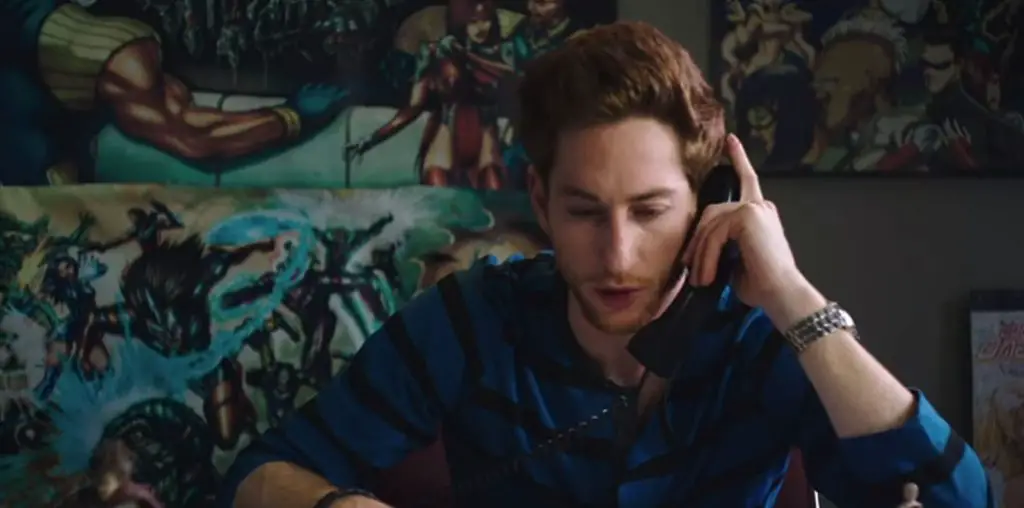
Maria (Catalina Sandino Moreno) is an impoverished, pregnant 17-year-old stagnating in a rural Colombian village. Shacked up at home where three generations of matrilineal family are packed together like sardines, she ekes out her living assembling flower bouquets at a prison-like rose plantation. An opportunity to leave this life of low expectations and limited opportunities arrives in the form of a motorcycle-riding rich kid from the city. He presents an “easy” way for Maria to make $5,000. She’s hungry to find out more.
Later, Maria sits opposite Javier (Jaime Osorio Gomez), an old, bearded man with weary eyes. He dangles a grape-sized pellet of heroin in front of her soft, staring face. The illicit wares have been stuffed into a latex glove-finger, and sealed off with dental floss. Maria’s throat has been numbed with analgesic soup. By day’s end, Javier will have prompted his new employee to swallow sixty-two pellets and instructed her to carry the cargo to New York via plane. He seals the deal with a blood-curdling threat: “If any of what you are carrying gets lost along the way, we will have a little conversation with your grandmother, your mother and your sister.”
So begins Maria Full of Grace, Joshua Marston’s powerful excursion into the forbidden realms of drug trafficking. Maria is a “mule” – one of approximately 1,000 per year who make the journey from Colombia to America, their innards bulging from the cocaine and heroin packed tightly within. Some, like Maria, are “swallowers,” or “internals,” preferring to ingest the covert cargo. Others are “inserters,” transporting their narcotics in other orifices.
As depicted in the film, such living suitcases must dodge a number of obstacles, including the skilled, vigilant eyes of airport security officers and customs officials. Discrete hotel hook-ups with contact traffickers will follow. These human receptacles then extract the merchandise (for “swallowers,” this often requires a mega-dose of laxatives), scrub it with toothbrushes and soap to remove fecal matter, and exchange it for a stack of hard-earned greenbacks.
“It’s hard to know exactly how many mules come over,” says Marston, sitting beside lead actress Sandino in a sleek, silver and black conference room at Seattle’s W Hotel. The duo is promoting its film for the Seattle International Film Festival (where Sandino will later win Best Actress honors).
“There are about 350 mules arrested every year,” he continues. “You figure about one per day, but it’s hard to know exactly what ratio get caught. It’s pretty small. They say that nearly every flight out of Columbia has at least one mule on it. That was true at one point, anyway.”
Sporting curly, dark hair and glasses, Marston’s appearance is that of a scholarly student completing a college thesis. Indeed, the writer and director of “Maria Full of Grace” is no stranger to study, having attained an MA in Political Science from the University of Chicago and an MFA in filmmaking from New York University. His fascination with social sciences fueled a transition towards directing movies, beginning with shorts like “Bus to Queens,” “Voice of an Angel,” and “Trifecta”. With “Maria Full of Grace,” his confident feature film debut, Marston continues examining the world in much the same way a professor of sociology might explore unfamiliar cultures while on sabbatical.
“From my point of view,” he reveals, “what’s interesting about making films is the discovery process. I didn’t know anything about drug mules, or Colombia, or the flower industry in any detail when I started to make the film. Discovering these worlds is what made me want to make it. I wanted to convey that feeling within the film itself, so that the person watching it is going through that same discovery. I’m interested in looking outward, finding corners of reality that haven’t been brought to the screen, and exploring them in a way that viewers can experience”
Raised in southern California before relocating to New York in the nineties, Marston appears cautious and reserved. He enunciates responses only after giving careful consideration to each query. The director’s thorough nature is reflected in his film’s unforced familiarity. The emerald hills of South America appear lived-in and intimate. Feelings of passivity and decay drip like sweat from Maria’s congested family nest. When Maria asks a more experienced mule named Lucy (Guilied Lopez) how past trafficking trips have gone, the hardened expert flashes a half-hearted, sad smile and exclaims, “I’m still here.” It sounds like the real deal, partially because Marston insisted on Spanish dialogue for the film.
Most convincing of all, however, are the casual scenes of drug manufacturing and transporting, filmed in the least sensational manner possible. There are no stylized nightclub shootouts or palatial, cocaine-smeared drug dens in Maria’s modest world. By depicting this culture with such understated strokes, Marston’s images are often uniquely disarming. We’re used to seeing gangster cliches, but when “Mariah Full of Grace” gives us only an upstairs room and an old man, it’s surprising. All the same, the drab atmosphere seems informed and real.
The interview continues in part two of AMAZING GRACE>>>

